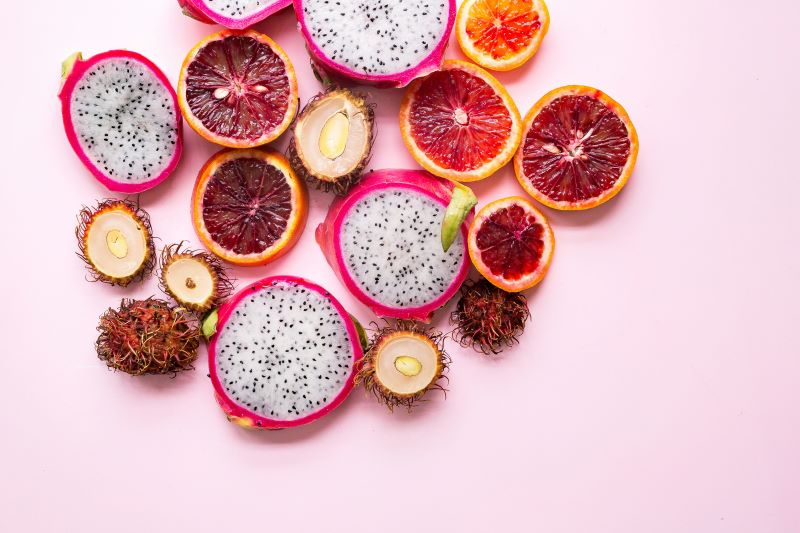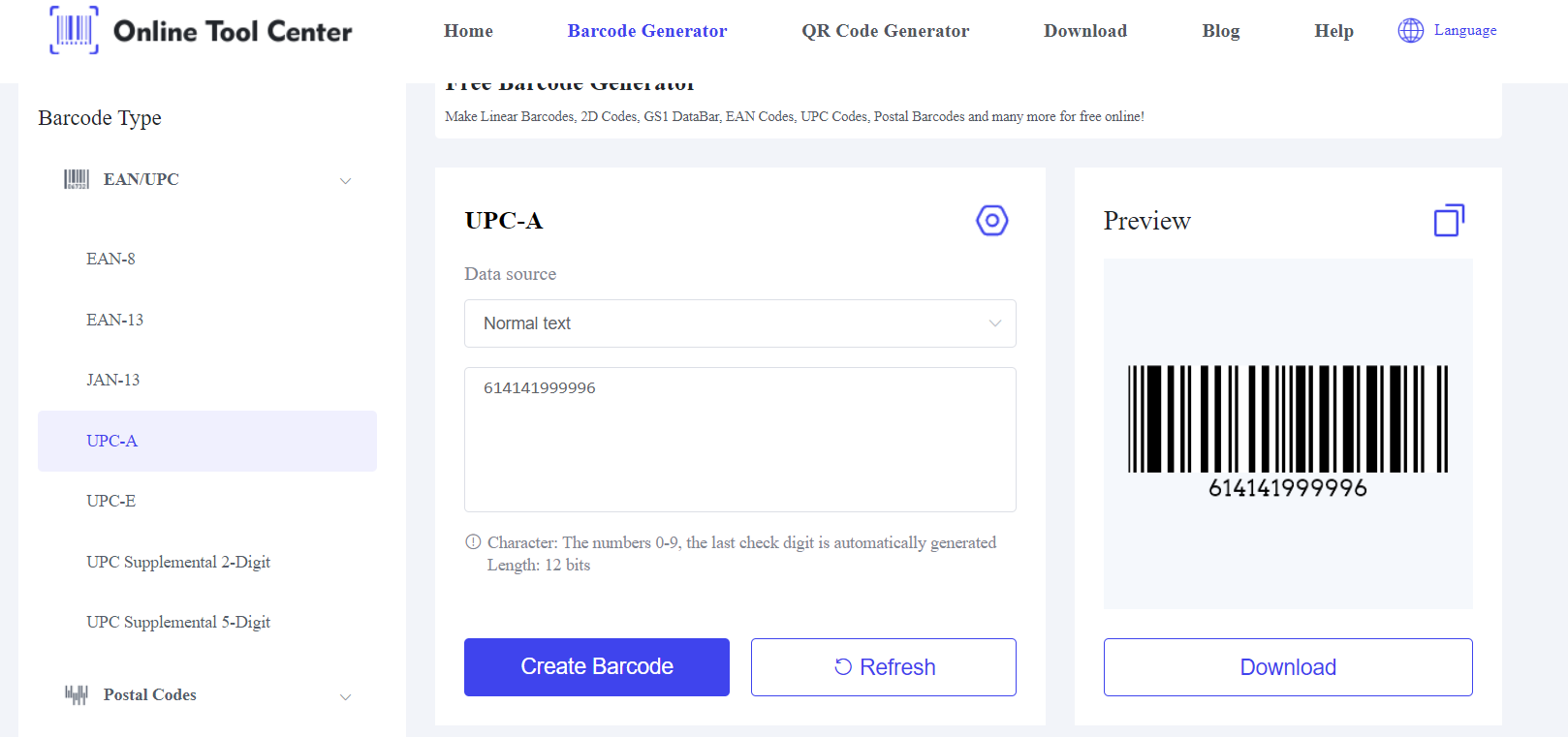Seeing a fruit barcode on your apple isn't just a supermarket trend, it's like giving your produce a little name tag packed with useful info for shoppers and storekeepers!
This article will explore the significance of these barcodes, what the barcodes on fruit mean, and how to read fruit codes. Additionally, we will discuss the types of barcodes used on fruit and their various use cases.

Types of Barcodes Used for Fruits
Barcodes used for fruits primarily include UPC, EAN, and GS1 DataBar. Each barcode type has specific applications and benefits. The choice of barcode depends on the retailer's needs and how the fruit is sold.
1. UPC
UPC barcodes are among the most common types of product barcodes, especially prevalent in North America. These barcodes typically consist of 12 digits and are used for packaged goods, including pre-packaged fruits.
Features:
Applicable Scope: Suitable for pre-packaged fruits such as a bag of apples or a box of strawberries.
Information Content: Primarily used for product identification; price and other information are usually stored in the retailer's database rather than in the barcode itself.
2. EAN
EAN barcodes are similar to UPC barcodes but are more commonly used in regions outside North America, particularly in Europe. EAN barcodes typically consist of 13 digits.
Features:
Applicable Scope: Like UPC, they are used for pre-packaged fruits.
Information Content: Similar to UPC, primarily for product identification, with pricing information stored in the retailer's database.
3. GS1 DataBar
GS1 DataBar is a newer type of barcode that can store more information in a smaller space compared to traditional UPC and EAN barcodes. GS1 DataBar barcodes are particularly suitable for loose and weighed fruits.
Features:
Applicable Scope: Ideal for loose and weighed fruits such as individual apples, bananas, etc.
Information Content: This can include more detailed information such as weight, price, expiration date, and origin.
How to Choose the Right Barcode Type
1. Pre-Packaged Fruits: For pre-packaged fruits (e.g., bagged or boxed), UPC or EAN barcodes are the ideal choice. They are efficient for product identification and are widely used globally.
2. Loose and Weighed Fruits: For loose fruits or fruits sold by weight, GS1 DataBar barcodes are more suitable. GS1 DataBar not only provides basic product information but can also include weight and price details, making it convenient for both retailers and consumers.
What Do the Barcodes on Fruit Mean?
Barcodes on fruit are not just random lines and numbers; they serve a specific purpose. These codes, often known as Price Look-Up (PLU) codes, are essential for identifying the type and variety of the fruit. They streamline the checkout process, ensure accurate pricing, and help manage inventory effectively.
PLU codes typically consist of four or five digits. A four-digit code indicates that the fruit was conventionally grown.
For instance, a conventionally grown banana might have a PLU code of 4011. In contrast, a five-digit code starting with the number 9 signifies that the fruit is organically grown, such as an organic banana with the code 94011.
This coding system helps consumers make informed choices about their produce based on their preferences for conventional or organic farming practices.
How Do You Read Fruit Codes?
Reading fruit barcodes is quite simple once you understand the basic structure. Here are the key points to keep in mind:
● Four-Digit Codes: These codes represent conventionally grown fruit. For example, if you see a code like 4012, it means the fruit is conventionally grown.
● Five-Digit Codes: When the code starts with a 9, it indicates that the fruit is organically grown. For example, 94012 would mean the fruit is organic.
● Five-Digit Codes Starting with 8: Although rare and not commonly used, these codes were intended to identify genetically modified (GM) fruits. However, due to consumer resistance, these codes are seldom seen in the market.
Understanding these codes can help you make better purchasing decisions and be more aware of the types of produce you are buying.
How to Create Barcodes for Fruits?
1. Determine the Barcode Type: Choose the appropriate barcode type (UPC, EAN, or GS1 DataBar) based on the fruit's packaging and sales method.
2. Use a Barcode Generator: Utilize online barcode generator to generate the barcode. Simply input the necessary information, and the tool will create the barcode for you.
3. Print and Apply the Barcode: Ensure high-quality printing to maintain barcode readability and attach the barcode to the fruit or its packaging.
Use Cases of Barcodes on Fruit
Barcodes on fruit serve multiple purposes that benefit both consumers and retailers. Here are some of the key use cases:

1. Streamlining Checkout Processes: Barcodes allow for quick and accurate scanning at the checkout counter, reducing wait times and ensuring correct pricing.
2. Inventory Management: Retailers use barcodes to keep track of stock levels, manage orders, and reduce wastage. This helps in maintaining an efficient supply chain.
3. Traceability: Barcodes can provide information about the origin of the fruit, helping in traceability and ensuring food safety. This is particularly important in the case of food recalls.
4. Consumer Information: With the advent of QR codes, consumers can now access detailed information about the fruit they purchase, including its nutritional content, farming practices, and even recipes.
5. Pricing Accuracy: Barcodes ensure that the correct price is charged for each fruit, helping in maintaining pricing consistency across different stores.
In summary, barcode fruit is an essential aspect of modern retail. These barcodes provide crucial information about the type, pricing, and origin of the fruit, making the shopping experience smoother and more informative for consumers. By understanding what the barcodes on fruit mean and how to read fruit codes, you can make better-informed decisions while shopping.
If you need to generate your barcodes for any purpose, consider using the free barcode generator. This tool can help you create various types of barcodes suited to your specific needs, ensuring accurate and efficient labeling for your products.





